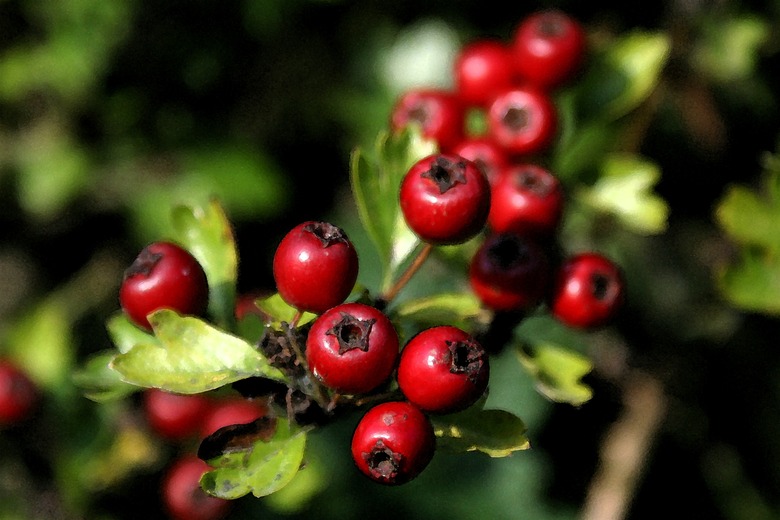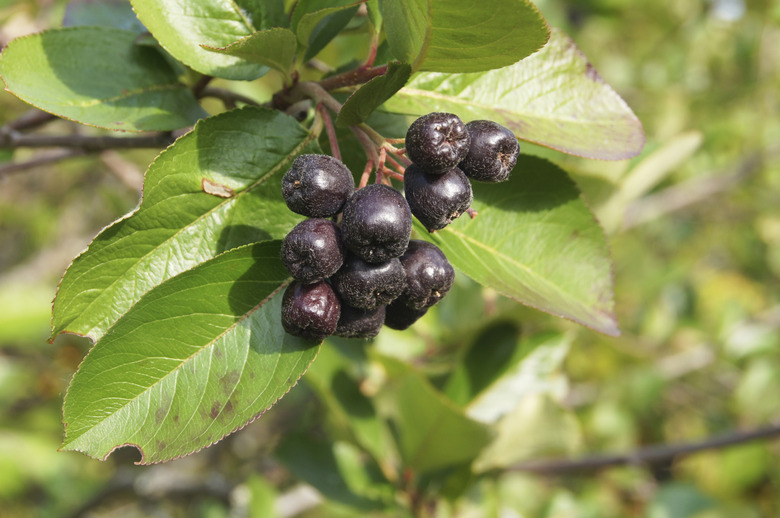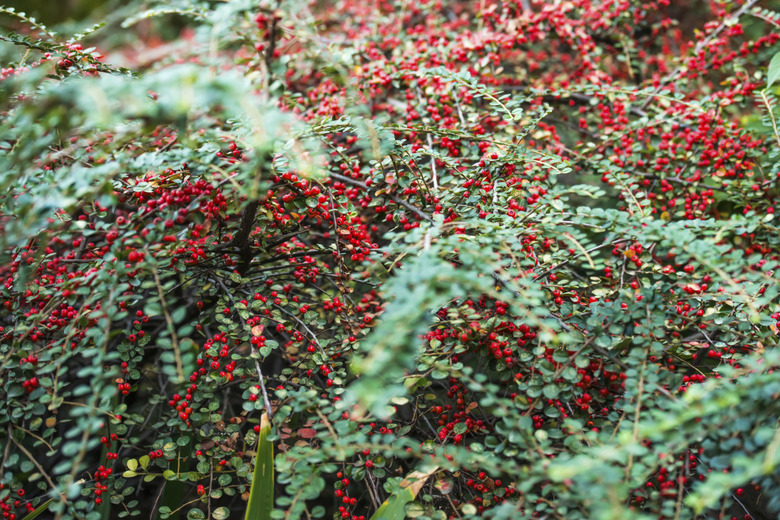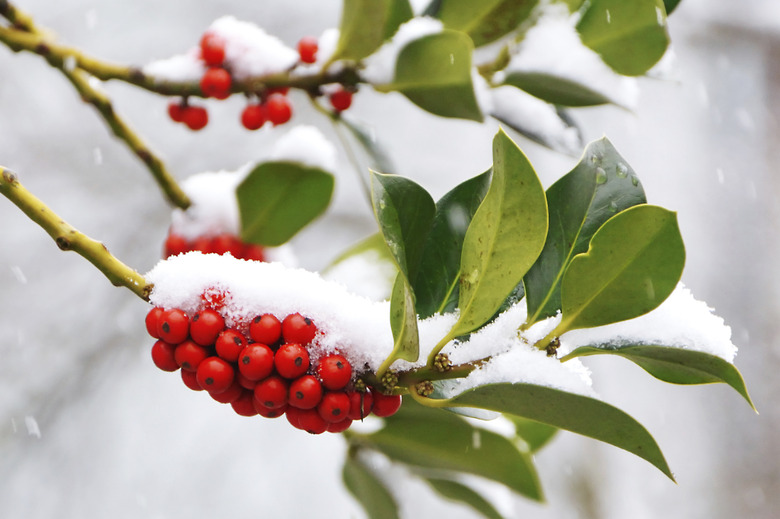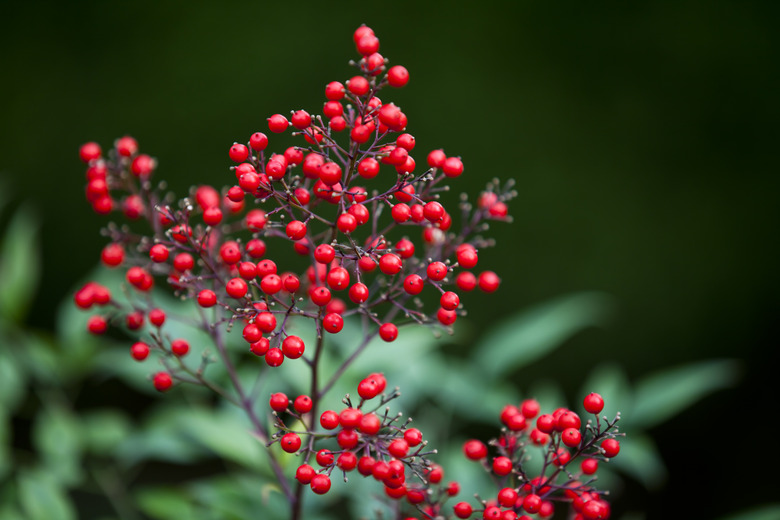Bushes Or Shrubs With Red Berries
Bushes or shrubs with red berries can be a source of much-needed winter garden color. Bushes with evergreen leaves to contrast with their red berries make an even more striking display. On many of these plants, the bright fruit arrives early in the fall. If it can escape hungry birds, it often remains through the coldest months. Some species of these shrubs, however, grow as either male or female plants. Planting both will increase the chance of abundant berry crops.
Chokeberry Brilliantissima
Brilliantissima, a slowly growing chokeberry (Aronia arbutifolia) cultivar, eventually reaches from 6 to 8 feet high and up to 4 feet wide. This deciduous rose family plant combines glossy, dark-green spring and summer leaves that turn brilliant red in autumn with white, April flowers that produce equally brilliant red fall berries. The edible fruit can remain on the plants into winter, reports the Missouri Botanical Garden. Although the berries are exceptionally bitter, with enough sweetener they will make a tasty jelly. Brilliantissima has the most abundant berry crops when it grows in full sun. The shrub also tolerates partly shady locations. A love of wet soil makes Brilliantissima a good choice for water gardens. Regardless of where it's planted, it needs good drainage.
Spreading Cotoneaster
Spreading cotoneaster (Cotoneaster divaricatus) is a quickly growing bush with dark-green, deciduous 1-inch leaves that bring long-lasting shades of purple, orange or yellow to the fall garden. The shrub can grow up to 6 feet high and wide. Its early spring, rose-pink flowers give way to oval red berries. The fruit can make a showy display as it ripens between September and October, notes the University of Connecticut. This wind- and salt-tolerant shrub likes a sunny to partly shady spot with well-drained, loose soil. It's not fussy about soil pH.
Common Winterberry
Winterberry (Ilex verticillata), another deciduous shrub, is a holly family plant native to moist woodlands, stream and pond edges and swamps. It grows up to 10 feet high with a rounded form and greenish purple, oval leaves. The plant is at its best when its tiny, white spring or summer flowers have yielded to red autumn berries, advises the Lady Bird Johnson Wildflower Center. The fruit, occurring only on pollinated female plants, can persist until the following spring. It will draw hungry birds to the garden all winter. Winterberry grows in full sun to shade. It tolerates moist or dry, acidic (pH below 6.8) soils.
Heavenly Bamboo
Heavenly bamboo (Nandina domestica), taking its name from slender, upright stems and bamboolike leaves, is actually a barberry family shrub. It stands from 3 to 8 feet high and up to 4 feet wide, according to the Missouri Botanical Garden. Heavenly bamboo's foliage progresses from coppery-green in spring to green in summer and purple-red in fall. Six- to 12-inch clusters of white, yellow-anthered summer blooms cascade from its branches. Bunches of red berries replace the blooms, remaining on the bush from fall until the following spring. Their weight is often sufficient to make the slender branches bend toward the ground. Heavenly bamboo performs best in averagely moist, humus-rich well-drained soil and full sun, with afternoon shade where summers are hot.
